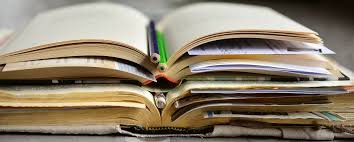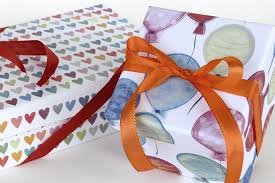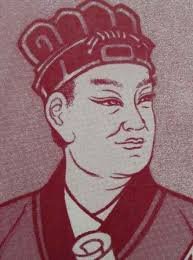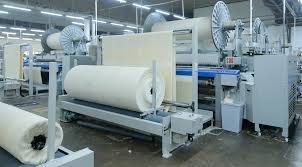EVER WONDERED HOW PAPER IS MADE?

**We all use paper. Most use it to write on as a note book. Some use it in the rest room as toilet paper. There are varieties of other places where paper is modified for use such as in card board paper, moving boxes and so much more**
**No one would say that in their life time, they have never used some sort of paper material or the other before. Therefore because paper is a paramount part of our lives and we can't do without it in our day to day activities , it is of uttermost importance that we are enlightened on the processes that go on before a 'sheet of paper is produced' in addition to the general knowledge that they are made from special trees**
What is paper?
Paper is a material manufactured in thin sheets from the pulp of wood or other fibrous substances used for;
writing,

.
.
.
.
.
.
.
Drawing,

.
.
.
.
.
or as a wrapping material.

It is an incredibly versatile substance made from naturally occurring plant fibers called cellulose.
One of the most revolutionary inventions of the human race is the production of paper. No more carving on wood or stone plates. Now we can not only record ground breaking discoveries but also feelings of love, various emotions, wisdom, poems, stories, works of art, work out mathematical problems and the best part, keep it all down for future generations.
History of paper

Although no one knows where paper was actually first invented, but the Chinese were the first to make head ways with it as the first paper making process was documented in China during the Eastern Han period, that is : (25–220 C.E.) . It is said to be traditionally attributed to a court official named Cai Lun.
During the 8th century, Chinese paper making spread to the Islamic world, where pulp mills and paper mills began to be used for money making.
So how does a rigid, inflexible log of wood bear something as flexible and fold-able as paper?

At first the Chinese cut down trees and peeled the bark off the log of wood. These large peeled cylinders of wood were then chopped into small chips of wood, few inches long. The chips were then boiled and dissolved in boiling water and this formed a thick solution called : PULP. The cooking removed the robust properties of the wood.
After this,the pulp was then poured and left to dry in a rectangular container. What materialized was a thin rectangular sheet of paper.
But as expected due to primitivity of the process, the type of paper produced was quite rough and unrefined.
In addition, the paper quickly turned yellow due to the presence of lignin, a complex non-carbohydrate aromatic polymer found in wood.
But as technology improved, paper that were smooth, white and velvety began to be produced.
The paper mill

_ Apart from the use of machines, the major difference in paper making in recent times and the way the Chinese made it, is that we have meticulously refined the inconsistencies in the roughed up, dried, yellow pulp. Several chemicals were identified that when mixed into the cauldron, would alter the paper’s texture and make it succumb to our desires_.
In case you are wondering whether the process is safe? The chemicals used to bleach the pulp do not include chlorine(cl), but rather oxygen(o) and peroxide(H2O2), to ensure that no harm is done to the environment.
The method we use today involves the wood being fed into a drum-shaped machine called the DEBARKER. Yes, you guessed it ; the machine separates the bark from the log of wood.
After this, the wood are chopped up into small pieces few inches long.
It is then cooked in a bath containing acid (not water first), this separates the 'unwanted' LIGNIN from the 'wanted' plant fibers the resulting solution is pulpy and fibrous.
The pulp is at this point referred to as 'wood-free' because it only contains plant fibers.
It is then cleaned and bleached with water to remove the acid and ensure that no residual lignin survives.
The treatment with water causes the paper to acquire the white color that is characteristic to paper.
It is important to remember that apart from the wood itself, application of water is a very important part of the process.
To make a kilogram of paper one needs at least 100 Liters of water, however as centuries passed ways have been developed to ensure water is conserved during the process such as soaking the pulp on a mesh of pipes during the long process.
After this, the pulp is passed through a series of blades to flatten the pulp now made entirely of fibers, which were entangled like hairs on a brush. Other than getting rid of inconsistencies, this process also gives the fibers fibrillated ends which mediate their bonding with adjacent fibers, making the resulting paper a lot more stronger.
Most manufacturers add calcium carbonate(CaCo3) to the pulp to improve its density and opaqueness, as well as dyes to give it color depending on the buyer’s requirement, also optical brighteners to further improve the paper’s appearance.
Soon the pulp is ready to dried. To eliminate water, the pulp is fed into the paper machine, that is;the heart of the paper mill.
The paper machine is a comprises of different, smaller machines that work together to bring out the best quality paper. The pulp is dried by making it pass through narrow spaces between rotating belts and wires.
Water is carried away, while the increased pressure ensures that a sheet of paper rolls out from the other end.
To ensure no moisture is left in the paper, the paper is subjected to infrared radiation.
The paper produced is painstakingly reviewed by experts who might send it for further refining to get rid of any inconsistencies that might have been missed during the previous processes.
The rolls of paper produced could be as long as 80 kilometers in length and 9 meters in width. Now that's amazing!
Also a single roll could weigh as much as 120 tons That's a lot of paper.
Finally, the paper is divided into much smaller lengths, which are loaded into cardboard boxes to be sold.
How are different kinds of paper produced?
To create different kinds of paper, the pulp is treated with different kinds of chemicals such as the coarse paper on which the contents of a novel are printed, the smooth paper that forms its cover, tissue papers used in rest rooms and let’s not forget the most valuable type of paper; money!They each just have special chemicals which is mixed with the pulp.
So in summary
- Peel the wood
- Chop it into little pieces ( sawdust size)
- Boil it in acid
- Add water
- Then dehydrate
- Flatten
- Add CaCo3
- Dry well
- Cut and package and sell.
so next time you see a piece of paper, you not only know how it was produced but also a little history about it. But most importantly, the time and energy taken to make a single sheet of paper
THANKS FOR READING
AS ALWAYS THIS IS YOUR GIRL @LIZBETHK
Good job and nice info on how to make a paper
Thanks . I'm glad it had an impact
This is a great article on paper, pepper is used in many ways as you have mentioned little. In fact, it's totally that we use paper from child to old age.
Yes indeed @princefm
Wow! I never knew.
This is highly informative, thanks for sharing
Thanks for reading, i aim to educate